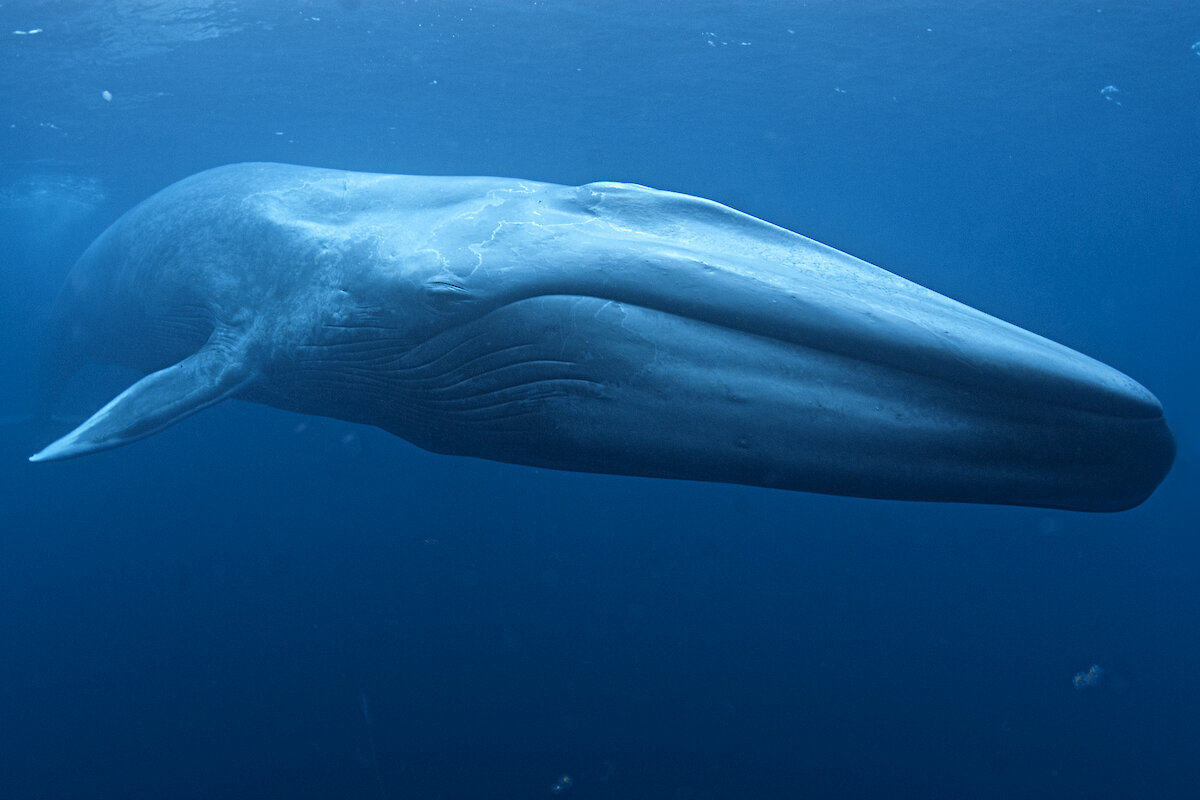Ships Slow Way Down for Blue Whales and Blue Skies
Sixteen Global Companies and 483 Total Ships Participated in the Incentive Program

Since 2014, the Protecting Blue Whales and Blue Skies program has been working to safeguard endangered whales and reduce air pollution along the California coast. To do this, it incentivizes ships to reduce their speed to 10 knots or less when traveling through designated vessel speed reduction (VSR) zones.
The initiative is collaboratively led by 12 partners, including the Santa Barbara County Air Pollution Control District and Channel Islands National Marine Sanctuary. It recently shared the results of its 2020 season and recognized the participants, which consisted of 16 global companies and a total of 483 ships.
Aeron Arlin Genet of Santa Barbara County Air Pollution praised the participating companies, many of which were returnees to the program. “Their voluntary efforts to slow down their vessels have translated to significant benefits for air quality and endangered whales,” he said. “This program continues to show what great things can happen when local, state, national, and international organizations collaborate.”
As the program grows, so do the environmental benefits. This past year, participants slowed their ships in the Santa Barbara Channel VSR zone for 59 percent of total miles traveled, way up from 21 percent in 2017. And of the approximate 300,000 miles traveled by all cargo ships in the program, more than 181,000 miles were traveled at 10 knots or less.
Additionally, the initiative’s VSR zones were expanded to include a new Southern California region, which ranges from Point Arguello in Santa Barbara County to waters around Dana Point in Orange County.
The program lasts from May through November, which is peak migration and feeding season for endangered whales. The 10-knot benchmark supports the National Oceanic and Atmospheric Administration’s (NOAA) request for vessels 300 gross tons or larger to slow down during these months, in an effort to reduce the amount of ship strikes, collisions between a vessel and marine animal that often result in injury or death. As a result of the program’s efforts in 2020, ship strikes on whales decreased by 61 percent in the San Francisco region and 30 percent in the Southern California region.
Additionally, the program’s duration overlaps the season when smog levels are typically high. Ships account for more than 200 tons per day of smog-forming nitrogen oxides, NOx, emitted off the coast of California, which in turn affects ozone levels throughout the state. When ships travel at 10 knots or less, they use less fuel and produce less pollution. In 2020, the program reduced the emission of 748 tons of NOx and 24,258 metric tons of greenhouse gases.
The organization’s incentive is fleet-based, and increases as more of a company’s ships reduce their speed to the 10-knot target. There are three award tiers; Sapphire, in which 75-100 percent of fleet total distance was traveled at 10 knots or less, Gold, in which 50-74 percent was traveled at 10 knots or less, and Blue Sky, in which 25-49 percent was traveled at 10 knots or less. Companies in the Gold and Sapphire levels receive a financial incentive that ranges from $2,000 to $30,000. In 2020, 7 of these companies — 6 of which were in the Gold tier and 1 of which was in the Sapphire tier — declined their financial reward. The money in turn will go toward funding the 2021 program, which is currently underway.
Lisa Volgenau of the Volgenau Foundation, one of the program’s partners, gave special acknowledgement to the companies that denied their incentives in a recent statement. “We hope that many more will follow their commitment to significantly improve ocean and human health for future generations,” she said.
Support the Santa Barbara Independent through a long-term or a single contribution.



